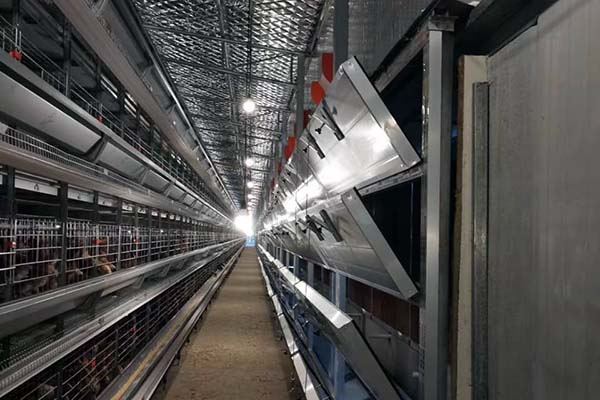Egg Laying Business Plan: A Step-by-Step Guide to Success
Time : 2025-04-19
Starting an egg laying business can be an exciting venture, especially if you have a passion for poultry farming. However, like any business, it requires a solid business plan to ensure its success. In this article, we’ll walk you through the essential elements of an egg laying business plan, written in full English. Let’s crack on with the details!
1. Executive Summary
Your executive summary should give a brief overview of your business, including your mission, vision, and the key objectives of your egg laying operation. This is the first section that investors or potential partners will read, so make it catchy and concise.
Example: “Our mission at FreshEgg Farms is to provide high-quality, locally-sourced eggs to communities across the region. We aim to become a leading egg provider by focusing on sustainable practices and customer satisfaction.”
2. Business Description
This section should detail what your egg laying business will do, what makes it unique, and who your target market is. Be clear and straightforward about the products or services you’ll offer.
Example: “FreshEgg Farms will specialize in free-range chicken eggs, offering a healthier and more sustainable option compared to traditional battery farming. Our target market includes health-conscious consumers, local chefs, and foodservice providers in our region.”
3. Market Analysis
Conduct thorough market research to understand your competitors, potential market size, and customer needs. This section will help you identify your unique selling points (USPs) and how you plan to capture market share.
Example: “According to recent market research, the demand for free-range eggs has been growing at an annual rate of 10%. Our competitive advantage lies in our commitment to ethical farming practices and our direct-to-consumer sales model, which cuts out the middleman and ensures fresher eggs for our customers.”
4. Organization and Management
Outline the structure of your business, including the key roles and responsibilities of your team. Highlight the expertise and experience of your management team to build credibility.

Example: “Our management team consists of experienced poultry farmers and industry experts. The farm manager, with over 20 years of experience, will oversee daily operations, while the head of sales will focus on building relationships with local businesses and retailers.”
5. Service or Product Line
Describe the specific products or services you will offer. Include details about the types of eggs, packaging, and distribution channels.

Example: “Our product line will include a variety of egg sizes and types, such as large, extra-large, and organic. We will use eco-friendly packaging and distribute our eggs through local farmers’ markets, grocery stores, and online orders for home delivery. Our goal is to ensure that our eggs are accessible to all our customers, regardless of their location.”
6. Marketing and Sales Strategy
This section should detail how you plan to market your egg laying business and attract customers. Include both short-term and long-term strategies.
Example: “Our marketing efforts will focus on online and offline channels. We will create a strong social media presence, attend local food festivals, and partner with local influencers to promote our brand. For the long term, we plan to invest in a loyalty program and expand our distribution network to reach more customers.”
7. Funding Request
If you’re seeking funding, this section should detail how much capital you need and how it will be used. Be transparent and realistic about your financial needs.
Example: “Our funding request totals $200,000, which will be used for purchasing chickens, infrastructure, and initial marketing efforts. We plan to break even within the first year of operation and reinvest profits back into the business to ensure continued growth and sustainability.”
8. Financial Projections
In this section, present your financial forecasts, including projected income, expenses, and cash flow. Be sure to include both short-term and long-term projections.
Example: “Our financial projections show that we will generate $300,000 in revenue during the first year, with an operating profit of $50,000. By the third year, we anticipate a net prof it of $150,000, enabling us to reinvest in our business and expand operations.”
it of $150,000, enabling us to reinvest in our business and expand operations.”
9.附录
Include any additional information that supports your business plan, such as resumes, letters of recommendation, or detailed market research.
10. Conclusion
Summarize your business plan and reiterate your commitment to success. End with a call to action for potential investors or partners.
Example: “At FreshEgg Farms, we are dedicated to providing high-quality eggs and supporting sustainable farming practices. We believe that with the right team, strategy, and funding, we can build a successful and sustainable egg laying business. We invite you to join us on this journey to success!”
Remember, a well-crafted business plan is your roadmap to success. With careful planning and dedication, your egg laying business can become a thriving enterprise.











